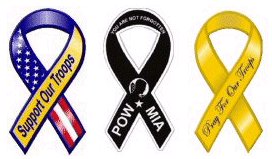If Iran’s Revolutionary Guards Strike Back: The Case of Iraq
The recent move by the U.S. government to designate Iran’s most powerful military unit, the Islamic Revolutionary Guard Corps (IRGC), as a terrorist organization reflects a tougher U.S. stance towards Tehran in response to its controversial nuclear program and military reach in the Middle East. Though largely aimed at weakening the IRGC’s global business operations and financial network, the new sanctions are the most aggressive form of U.S. policy in confronting Iran’s growing influence in Iraq, where U.S. military officials accuse the Guard of supplying weapons and military expertise to Shiite militias (AP, September 24). With the IRGC as the first national military organization sanctioned by the United States, Washington and Tehran have now moved another step closer to a possible military showdown. In light of the unfolding crisis, it remains unclear what could happen in a military conflict between Iran and the United States. A basic scenario involves a comprehensive U.S. attack on Iran’s nuclear facilities, naval forces, information and technology support system (especially those linked to nuclear sites in Bushehr, Isfahan and Tehran) and finally the bombing of IRGC ground force units stationed near the strategic cities of Abadan, Ahvaz, Chah Bahar, Dezful, Hamadan, Khoramshahr and Mashahd. The United States, possibly with the help of Israel, could help stave off Iranian retaliation by destroying Iran’s command air base where Iranian fighter jets are kept on daily readiness against potential attacks by American forces.
Assuredly, these military operations will be followed by a severe Iranian retaliation. In the words of the Guard’s commander, General Muhammad Ali Jafari, the IRGC will unleash its most sophisticated conventional armed forces against the U.S. military in the event of any attack on Iranian soil (Fars News, November 1). To what degree the Guard will use unconventional means of response remains unclear. So far, most of the discussion in academic and policy circles has focused on the Guard’s connection with various Iraqi Shiite militia groups, particularly the Badr Organization, the military wing of the Supreme Islamic Iraqi Council (SIIC) that originally received training and funding from the IRGC in the early 1980s. Yet such a straightforward assessment reads too much into the historical connections between the two military units and ignores the highly complex relationship between post-Baathist Shiite militias and IRGC forces.
...
Pertinent Links:
1) If Iran’s Revolutionary Guards Strike Back: The Case of Iraq
Monday, January 28, 2008
Subscribe to:
Post Comments (Atom)




No comments:
Post a Comment